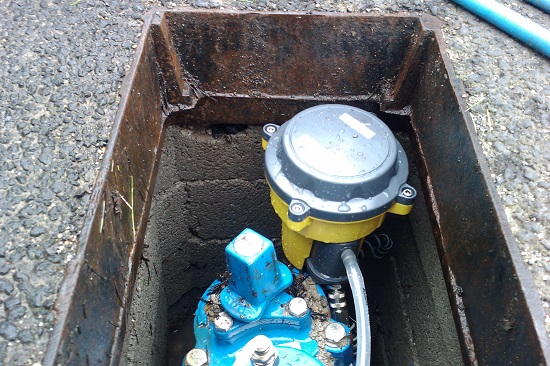The challenge
In England and Wales, the Drinking Water Inspectorate (DWI) has responsibility for checking that water companies supply water that is safe to drink and meets regulatory standards. The DWI has issued requirements and expectations requiring consideration be given to water supply quality and distribution network maintenance within Distribution Operation and Maintenance Strategies (DOMS).
Water sampling has traditionally been carried out at waterworks, or by samplers connected to the network, to enable analysis in a laboratory. However, this does not provide the type of feedback that the DWI now expects in terms of highlighting potential water quality risks. The implication of DOMS is that in-line monitoring of drinking water quality is increasingly important.
The solution
Salamander Group was founded in 1996 by Dr. Stephen Boult as a spinout from The University of Manchester. The company develops products for in-line monitoring of water quality in water distribution systems.

System attached to a meter
Hydraclam fits directly onto standard water hydrants that are typically found in chambers located in most streets or in end-user premises, and is easy to install. Once fitted, Hydraclam measures four of the key water quality measures:
- Turbidity (indicating the condition or ‘cloudiness’ of water)
- Conductivity (indicating of the quantity of dissolved material present)
- Pressure
- Temperature.
Having attached Hydraclam to a hydrant, data is recorded internally and retrieved through a personal digital assistant (PDA) or PC. Alternatively, the unit can be fitted with an adjustable aerial to allow for remote communications. Another product, Chloroclam, operates in a similar way and continuously monitors chlorine in water distribution networks. Both products are distributed throughout the UK by Siemens Water Technologies.
Resulting benefits
Hydraclam and Chloroclam are quick and easy to install, have single push-button operation, and require little maintenance. They provide continuous water quality monitoring, and their internal battery lasts for 1 year on hourly sampling.
Dr Gaffney, Product Manager for Siemens Proactive Infrastructure Management, said “until very recently, the water supply industry has been heavily reliant on data of poor temporal and spatial resolution to manage water quality in distribution. Only with HydraClam® and Siemens PIM solution will WSPs be in a position to optimise their network’s performance, meet regulatory indicators and proactively predict and control water quality.”
Future directions
To be provided.
- Gaffney, J., Boult, S. Need for and Use of High-Resolution Turbidity Monitoring in Managing Discoloration in Distribution. Journal of environmental engineering. 2012 January; 138(6): . eScholarID:140278 | DOI:10.1061/(ASCE)EE.1943-7870.0000521
None listed.


Sources of funding
Previous projects funded by NERC, EPSRC and University of Manchester.




















 The Water Security Knowledge Exchange Portal supports the objectives of the
The Water Security Knowledge Exchange Portal supports the objectives of the 